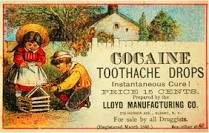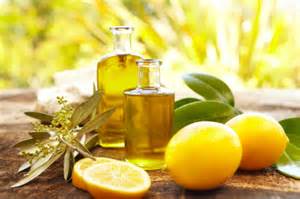








History of Drugs-2
Not all alkaloids are so easy to reproduce chemically because they have large compounds which are difficult to synthesize. An example of this is the Madagascan periwinkle, the source of vincristine sulphate, an essential drug in any pharmacy dealing with childhood leukemia and certain lymphomas. It still takes twelve tons of crushed leaves to produce one ounce of the drug - also the source of Vinblastine, used to treat Hodgkin's disease.
Over the years untold suffering has been alleviated by this innocent-looking pink and white ornamental, Catharanthus Roseus, which gardeners appropriately call 'bright eyes' . Cancer treatment would be a harder task today without 70 per cent of antitumor drugs derived from native medicines. Originally, all drugs were natural. The Ayurvedic system of medicine, thought to be at least 5,000 years old, is still extensively used in the Indian subcontinent and is studied by many Western medics as well. The text book mention 8,000 different natural medicines, using plant, animal and mineral materials.
Chinese herbal medicine is also becoming popular in the West, and of course continues to be of central importance in the Materia Medica of China.The first drug directory that we know of is the 2800 BC Pen Ts'ao, written by herbalist Shen Nung. In the Western tradition, credit for establishing medical botany as applied in science is given to the Greek physician Pedanois Dioscorides who in Ad 78 published his Materia Medica which detailed the properties of about 600 medicinal plants, as well as the medicinal value of certain animal products. Books such as these, recording the properties of natural products, were the main stay of Western Medicine for about 1,400 years.
The concept of medicinal chemistry was introduced in the 1520s by Paracelsus, a Swiss pharmacist physician whose 'real' name was Theophrastus Bombastus von Hohenheim. Paracelsus advocated the use of mineral salts and acids, and experimented with various chemical processes including distillation.
It would be another three hundred years before medical chemistry really took off, however, inspired by the German apothecary's assistant, Fredrich Serturner, who in 1806 isolated the first active alkaloid of a natural drug - raw opium from the poppy Papaver Somniferum. Serturner named it morphine after Morpheus, the Greek god of Dreams. Codeine is a derivative of morphine.
The history of drugs clearly shows the source of inspiration - nature. However, nature has its disadvantages. Imagine yourself the manager of a drug company looking at your storehouse full of bags of herbs, barks, roots, leaves and flowers imported from all over the world. you start thinking about what could go wrong with your supplies. natural products are vulnerable to adverse weather conditions, including flood and drought, as well as to pest catastrophes.
But it is just one of these raw materials fails to make it to the factory, drugs cannot be made and people die. Also native raw materials are unpredictable in terms of the quantity of active ingredients they contain, and huge quantities of the stuff have to be processed to produce small quantities of the required drug. On top of that, the raw material has to be purified and quantified - all of which is more effort. You can see why chemists try to find a way of creating the active ingredients of medicinal plants by more easily controlled chemical means.
Reference: Fragrant Pharmacy/V.Worwood
Read More... History of Drugs - 3
- Home
- Addiction
- History of Drugs-4
- History of Drugs
- History of Drugs-3
- Rosemary-Personality-Profile
- The Somatid Connection
- Personality In Perfumery
- Personality Tests
- The Water Connection
- History of Drugs-5
- Mind-Mood-Emotion-Quick Reference Chart - S - Un
- Cinnamon - Personality profile
- Emotional-Healing Problems-A-B-Positive and Negative Mood Charts
- Emotional-Healing Problems-B-H-Positive and Negative Mood Charts
- Mind-Mood-Emotion-Quick Reference Chart - Un - W
- How Essential Oils Work On the Brain
- Cardamom Personality Profile
- Essential Oils Used For Emotional Healing-A-M
- Electro Magnetism
- JASMINE- Floral - Jasminum Officinale,J. grandiflorum, J.sambac
- HYACINTH - Floral - Hyacinthus Orientalis
- Emotional Healing Introduction - 2
- Emotional Healing Introduction
- Memory Enhancement, Mental Clarity and Efficiency
- How To Get Through Life In One Piece
- HELICHRYSUM (Immortelle or Italian Everlasting)
- GRAPEFRUIT - Fruitie - Citrus paradisi
- The Art Of Smelling - Which Method - Aromaprofiles
- The Art Of Smelling
- GINGER PERSONALITY PROFILE
- Geranium - Pelargonium graveolens Personality Profile
- Frankincense Resinie - Boswellia Carteri
- Quality and Purity - 2 - AromaProfiles
- Quality and Purity - AromaProfiles
- ChemoTypes - AromaProfiles
- Adaptogens - AromaProfiles
- Synergy and Creative Blending
- Complexity and Flexibility- AromaProfiles
- How To Use Essential Oils For The Fragrant Mind


